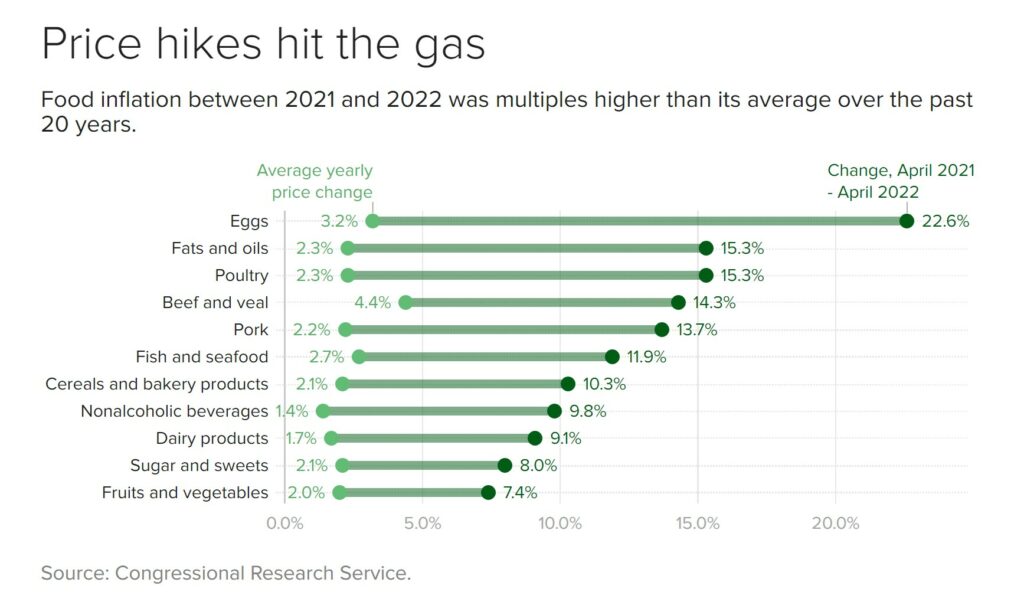This is a follow-up to two posts on Tuesday and Wednesday. One topic being “Low Income Consumers” and the other being GAO Prices etc. Neither said the Biden Administration is at fault. If you read Thursday’s report by New Deal Democrat, we are avoiding a recession. Briefly, Much of the cost from pricing increases people are experiencing result from rent-taking by corporations the same as what happened in 2008. They can do it (raise prices) because they can do it. What are you going to do about it? Also the pandemic clearly interfered with the economy. Funding passed on to people since they could not work (a well-known requirement by Republicans [if you can crawl-you better be working]), the Biden administrative made sure there were funds for
Topics:
Angry Bear considers the following as important: Inflation after the Pandemic, Journalism, politics, US EConomics
This could be interesting, too:
Robert Skidelsky writes Lord Skidelsky to ask His Majesty’s Government what is their policy with regard to the Ukraine war following the new policy of the government of the United States of America.
NewDealdemocrat writes JOLTS revisions from Yesterday’s Report
Joel Eissenberg writes No Invading Allies Act
Ken Melvin writes A Developed Taste
This is a follow-up to two posts on Tuesday and Wednesday. One topic being “Low Income Consumers” and the other being GAO Prices etc. Neither said the Biden Administration is at fault. If you read Thursday’s report by New Deal Democrat, we are avoiding a recession.
Briefly, Much of the cost from pricing increases people are experiencing result from rent-taking by corporations the same as what happened in 2008. They can do it (raise prices) because they can do it. What are you going to do about it? Also the pandemic clearly interfered with the economy.
Funding passed on to people since they could not work (a well-known requirement by Republicans [if you can crawl-you better be working]), the Biden administrative made sure there were funds for people and families, healthcare, etc. Time to get off the Biden-caused-it-all-kick. Pure nonsense by a few wishig to score political points.
Food prices are rising at the highest rate in decades. Here’s where that money goes,
CBS News-Money Watch, Irina Ivanova
Even as U.S. inflation moderates, for millions of Americans every trip to the grocery store is a pain in the pocketbook. Supermarket prices have shot up at the fastest rate in decades, putting staples like eggs and bread out of reach for some.
Over the past two years, egg prices have nearly doubled, leading some consumers to extreme work-arounds like trying to smuggle eggs from Mexico and painting “Easter potatoes” instead of dying eggs, to save on household funds. Meat, fish and chicken are all substantially pricier than they were two years ago, as well as cereal and bread, which cost nearly 25% more today than they did in 2021.
So where does the money from those price hikes go? A report from the Government Accountability Office this week breaks down the various pressures on food prices while putting the recent inflation into context.
According to the GAO, there were kinks all along the journey of food, from farm to plate.
Higher costs for animal feed and fertilizer contributed to steeper prices for farmers, while shortages of packaging materials impacted the food-processing stage — such as when peanuts are ground up to make peanut butter.
The GAO also broke down the various segments of food production and their role in the price of items on the shelf. The largest component was food processing, a segment that encompasses food and beverage manufacturers, which took 25 cents out of every food dollar. That was followed by retail trade — the store, supermarket or other retailer that sells consumers that peanut butter.
The cost of actually growing the food — called farm production — accounted for just 14 cents, while agribusiness (which includes the producers of fertilizer and feed that farmers buy) took another 5 cents.
The GAO noted that supply-chain shocks related to COVID-19 affected many parts of the food chain, contributing to price hikes. The GAO . . .
“For example, higher animal feed costs predominantly affect the production segment of the supply chain. In contrast, higher energy costs (e.g., fossil fuels and renewables) can affect entities that use energy throughout the food supply chain.”
A major factor that goes unnoticed in this analysis is the role of profits. Put differently, if one-fourth of the cost of your peanut butter jar goes to the company that ground and packaged the peanuts, how much of that increased sum of money is going to cover the factory’s higher costs of energy, equipment and pay, and how much goes toward padding the pockets of factory owners?
The GAO report doesn’t separate out profits, but plenty of other evidence suggests they are a substantial component of inflation. In 2022, corporate profit margins surged to their highest level since the 1950s. Research from the Roosevelt Institute’s Mike Konczal found that “firms increased their markups substantially in 2021, both to their highest level and with the largest single-year increase since 1955. Firm profitability, both before and after taxes, also increased to its highest levels,” Konczal wrote. Plenty of retail executives have boasted to investors of their ability to hike prices in the pandemic’s aftermath.
The Federal Trade Commission is currently looking into the possibility of price-gouging. Late in 2021, the FTC launched an investigation into major retailers and consumer-goods companies, including Amazon, Kroger, Walmart, Kraft Heinz and Procter and Gamble.



